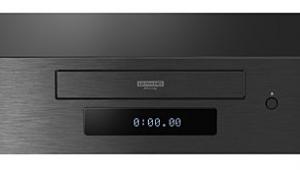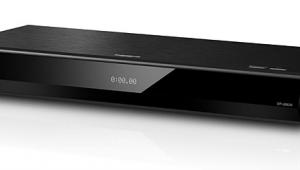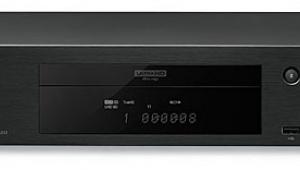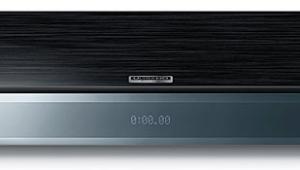Sony BDP-CX7000ES Blu-ray Disc MegaChanger
Dream Machine?

Sony’s foray into the U.S. electronics market began more than 50 years ago when co-founder Akio Morita came to New York to sell a $30 miniature transistor radio. At the time, he attracted the interest of Bulova, a watchmaker with a vast retail network. Bulova offered to buy 100,000 units under one condition—Sony would have to original equipment manufacture (O.E.M.) the radios, and they would be branded and marketed under Bulova’s name. Amazingly, Morita went against his board of directors’ advice and turned down the deal. His 50-year goal was to make the Sony name as popular as Bulova’s. Through the strength of his vision, Sony is now one of the most recognized brands in the world.
Within Sony’s brand is the Elevated Standard (ES) line, the premium end of the company’s portfolio of products. Over the years, the ES line of equipment has included outstanding DVD players, AVRs, and early in 2009, two Blu-ray Disc players. Late in the third quarter, Sony filled a hole in the Blu-ray market by releasing its second multidisc changer, the $1,900 BDP-CX7000ES MegaChanger. (The first, Sony’s $3,500 HES-V1000 Home Entertainment server is no longer available.)
Look at the Size of That Thing
To say the BDP-CX7000ES is the biggest Blu-ray player I’ve ever seen would be an understatement. This baby is massive at nearly 10 inches tall. Granted, in order to store 400 of your favorite Blu-ray Discs, DVDs, or CDs, you’ll need something larger than your typical player. While it’s large, it certainly isn’t ugly. The top of the chassis has the standard front-panel display, but the majority of the height is there to house the carousel for the discs. Each of the 400 slots is numbered. Slot 1 is reserved for rentals, and a convenient Rental Slot button on the front panel queues up the appropriate slot.
Other buttons on the front panel include the usual suspects (Play, Eject, etc.), plus it has a knob to select discs or search for a chapter/track/scene while in Direct Search mode. It also has a Disc Load button, which reads the disc information and then accesses the Gracenote database for disc information. The finishing touch on the front panel is a retractable door that hides all 400 discs.
The rear panel includes one HDMI 1.3a output with support for 48-bit Deep Color and x.v. Color (not currently supported by either DVD or Blu-ray). It also includes an Ethernet port (required for Profile 2.0 players), a component output, 7.1-channel analog outputs, and more, including a recessed USB port to add the required 1 gigabyte of memory (not included) for BD-Live features. I’m surprised a player in this price class doesn’t have the onboard memory that’s required for BD-Live, something that many lower-cost players include.
The player internally decodes Dolby TrueHD and DTS-HD Master Audio and outputs them over HDMI as PCM or analog from the 7.1-channel output. For newer AVRs and surround processors with onboard decoding, the player can send raw bitstreams from its HDMI 1.3a output. However, you lose secondary audio with PiP as well as the clicks and beeps in Blu-ray Disc menus.
User Interface and Setup
Setup and navigation through the menus is a breeze. Sony incorporates the Xross Media Bar (XMB) user interface that the PS3 and PlayStation Portable (PSP) made popular. The XMB includes four icons (Settings, Photo, Music, and Video) with subheadings under each. A nice upgrade is the inclusion of thumbnails with cover art for inserted discs. However, they are so small that they’re barely legible on my 76.5-inch-wide screen.
The included non-backlit remote isn’t that great, and it’s nearly impossible to use in a dark room. The buttons are of various sizes, but the layout has one fatal flaw—one of the largest buttons on the remote is the Home key, which is located directly below Enter. With one press of this key, the player exits the movie and brings you back to the XMB. On more than one occasion, my thumb grazed it, which caused me to utter an expletive or two while I waited for the movie to restart. With the glacial loading of BD-Java-intensive discs, I wish there was an additional step that asked whether you really want to exit the movie.
When I first started the player, I was greeted with an Easy Setup option, which sets the player’s language, connection type (HDMI for my testing), resolution, aspect ratio, HDMI control (not tested), and permission for Internet access. Finally, it has a Quick Start Mode, which puts the player in a suspend mode versus a complete power off. While this uses more electricity, it speeds up the start time by 50 percent (25 seconds versus 50).
- Log in or register to post comments






























































